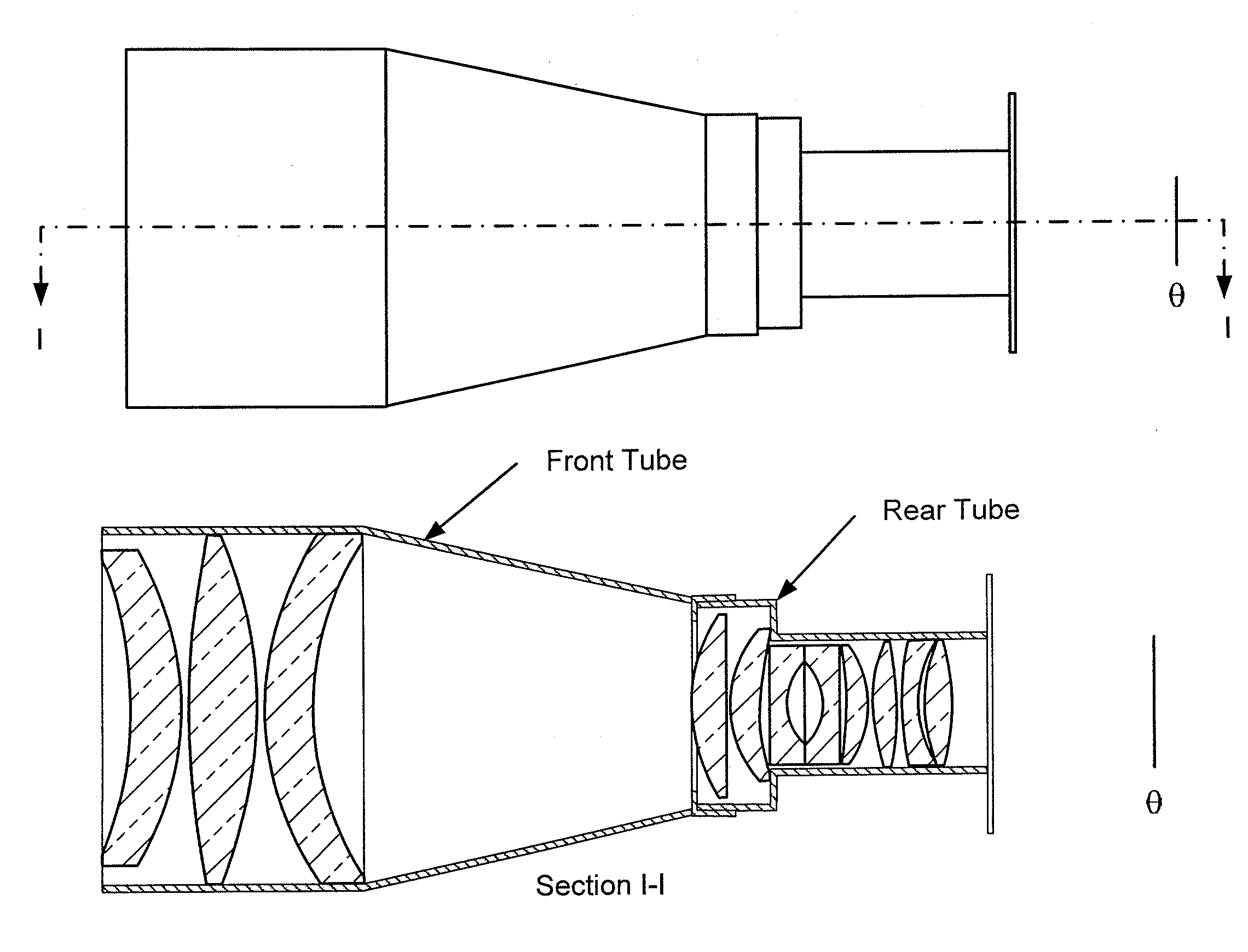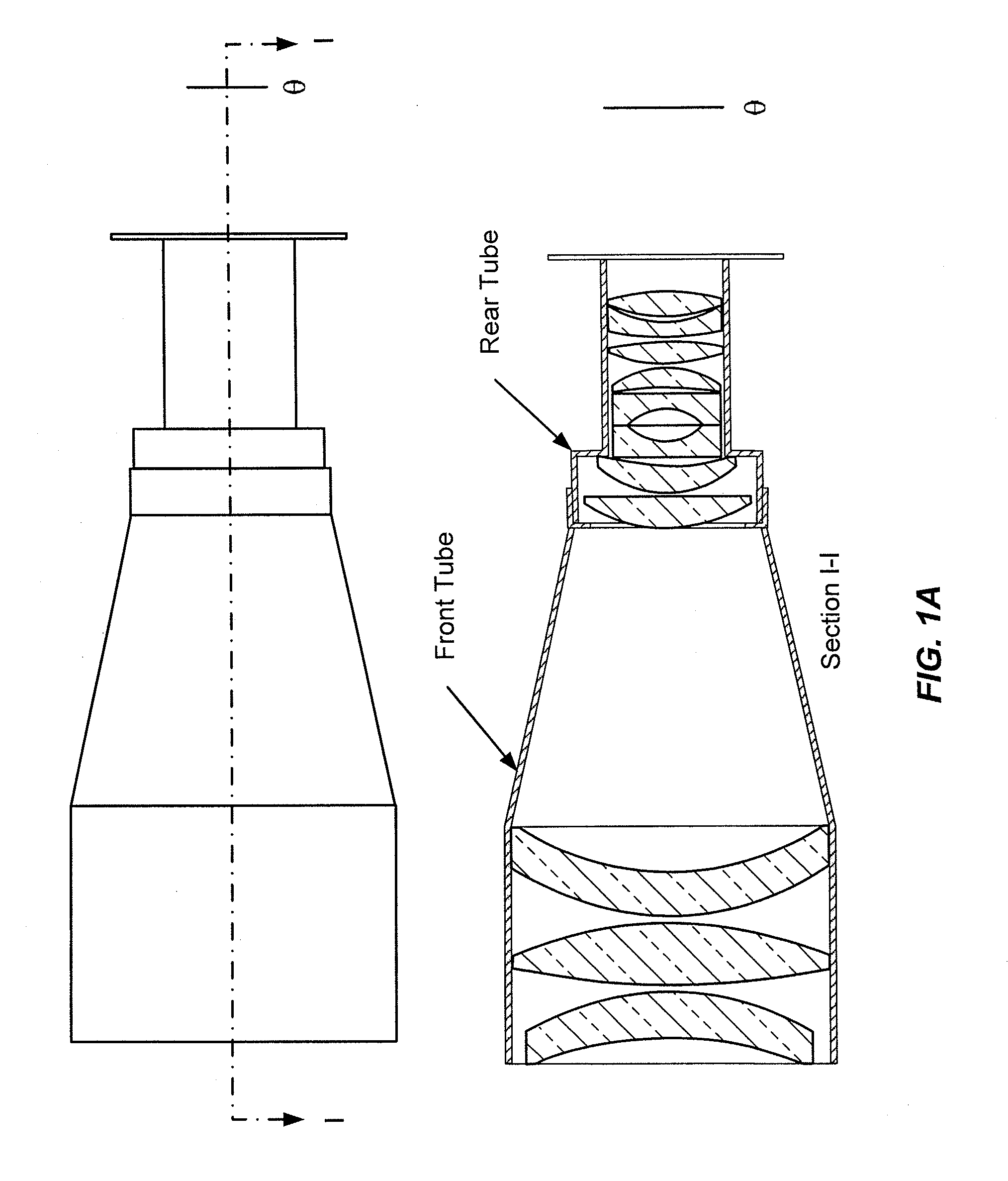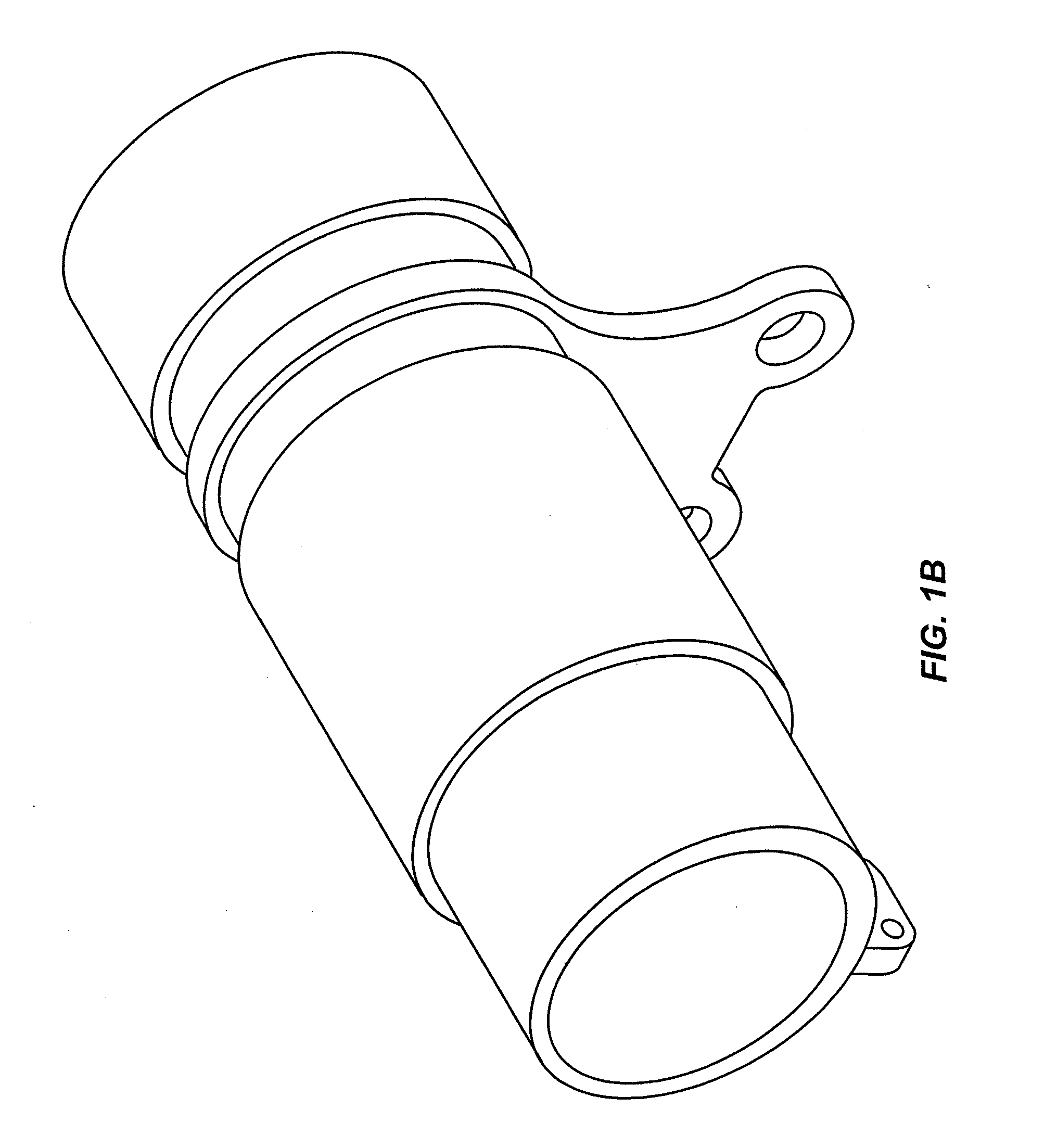Super light-field lens and image processing methods
a technology of super light-field and image processing, applied in the field of optical systems, can solve the problems of not being used, limiting the use of prior systems, and not providing 3 or 4 mm clearan
- Summary
- Abstract
- Description
- Claims
- Application Information
AI Technical Summary
Benefits of technology
Problems solved by technology
Method used
Image
Examples
Embodiment Construction
[0036]FIGS. 1a and 1b illustrate a relay element according to one embodiment. As shown in FIG. 1a, a first set of optical elements in the front tube (including a field lens such as a prime lens) receives light refracted by the lenslet array (not shown) and collimates and focuses that light onto a second set of optical elements in the rear tube, which focus the light onto an image plane (not shown). A sensor, e.g., CCD, CMOS or film, positioned at the image plane receives and records image(s). FIG. 1b shows a perspective view of an example of a housing structure (e.g., lens barrel), with the relay lens on the left side
[0037]In certain aspects, the field lens, lenslet array and relay optical elements are contained within a housing structure (e.g., lens barrel) that allows for adaption of distance between the various elements, e.g., by manual rotation or manipulation, or by electronic control via a controller subsystem. FIGS. 2A and 2B show different views of more detailed examples of ...
PUM
 Login to View More
Login to View More Abstract
Description
Claims
Application Information
 Login to View More
Login to View More - R&D
- Intellectual Property
- Life Sciences
- Materials
- Tech Scout
- Unparalleled Data Quality
- Higher Quality Content
- 60% Fewer Hallucinations
Browse by: Latest US Patents, China's latest patents, Technical Efficacy Thesaurus, Application Domain, Technology Topic, Popular Technical Reports.
© 2025 PatSnap. All rights reserved.Legal|Privacy policy|Modern Slavery Act Transparency Statement|Sitemap|About US| Contact US: help@patsnap.com



